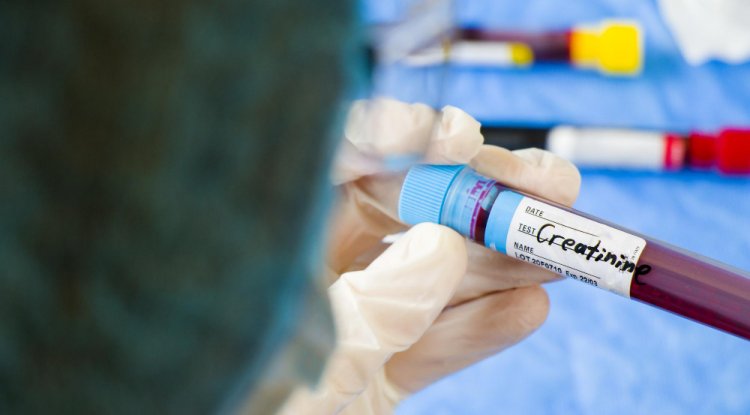The Art and History of Piercing: Ancient Traditions to Modern Trends
Explore the rich history and cultural significance of piercing, from ancient rituals to modern fashion statements. Learn about the safety of piercings and how they've become a normal form of self-expression.

The Art and History of Piercing: From Ancient Rituals to Modern Fashion
Piercing, the practice of puncturing or cutting a part of the body to create an opening for jewelry, has a rich history spanning centuries, deeply rooted in cultural, religious, and aesthetic traditions. Once symbolic of status, bravery, or spirituality, piercing has evolved into a mainstream form of self-expression and fashion embraced by people of all genders and ages.
Ancient Origins
The history of piercing dates back thousands of years, with evidence found in ancient civilizations worldwide. In Egypt, mummified bodies have been discovered with earrings dating back to 3000 BCE, indicating that ear piercing was not only a fashion statement but also a sign of wealth and social status. Similarly, in ancient Rome, body piercing symbolized virility and courage, with soldiers piercing their nipples as a badge of honor.
Cultural Significance
Piercings held various meanings and purposes across cultures. For some Native American tribes, nose piercings signified wealth and status, while in Hindu culture, nose piercings were believed to enhance the bride's beauty and symbolize her married status. In Africa, lip and ear piercings marked rites of passage and tribal affiliations.
Modern Resurgence
In the 1970s and 1980s, piercing experienced a revival in the West, particularly in punk and alternative music scenes, where it became a form of rebellion against mainstream culture. Today, piercing has transcended its subcultural roots and is a ubiquitous form of self-expression, with people from all walks of life adorning themselves with piercings.
Fashion and Self-Expression
Piercing is now a common form of self-expression and fashion, with individuals choosing piercings to reflect their individuality, style, and personal beliefs. From simple earlobe piercings to more elaborate facial and body piercings, the options are limitless, allowing individuals to create unique and meaningful looks.
Safety Concerns
While piercing has become increasingly popular and socially acceptable, safety concerns remain, especially when piercing sensitive parts of the body. It is crucial to choose a reputable piercer who follows strict hygiene practices and uses sterile equipment to minimize the risk of infection. Additionally, proper aftercare is essential to ensure the piercing heals correctly and without complications.
Safety Considerations in Body Piercing
-
Choosing a Reputable Piercer: Select a professional piercer who operates in a clean, sterile environment and follows strict hygiene protocols. Ask about their experience, certifications, and sterilization methods.
-
Sterile Equipment: Ensure that all needles, jewelry, and tools are sterile and single-use. Reusing equipment can lead to infections and complications.
-
Skin Sensitivity Tests: Some individuals may be allergic to certain metals used in body jewelry. Consider getting a skin sensitivity test before getting pierced, especially for materials like nickel.
-
Proper Aftercare: Follow the aftercare instructions provided by your piercer carefully to prevent infections and promote healing. This may include cleaning the piercing with saline solution and avoiding certain activities that could irritate the piercing.
-
Signs of Infection: Be aware of signs of infection, such as excessive redness, swelling, pain, or discharge. If you suspect an infection, seek medical attention promptly.
Body Jewelry Materials
-
Surgical Stainless Steel: Considered one of the safest materials for body jewelry, surgical stainless steel is durable, hypoallergenic, and less likely to cause infections or allergic reactions.
-
Titanium: Another hypoallergenic option, titanium is lightweight and strong, making it suitable for people with sensitive skin or metal allergies.
-
Niobium: Similar to titanium, niobium is hypoallergenic and often used in body jewelry, especially for those with metal sensitivities.
-
Gold: Pure gold (24 karats) is generally safe for body jewelry, but lower karat gold may contain other metals that can cause allergic reactions.
-
Platinum: An expensive but safe option for body jewelry, platinum is highly resistant to corrosion and unlikely to cause reactions.
-
Bioplast: A flexible and hypoallergenic material, bioplast is suitable for initial piercings and can be trimmed to fit comfortably.
When choosing body jewelry, opt for high-quality materials to reduce the risk of adverse reactions or infections. If you have known allergies or sensitivities, consult with your piercer to find the best material for your body.
Piercing has evolved from ancient traditions to become a mainstream form of self-expression and fashion. Whether it's a nod to tradition, a symbol of rebellion, or a statement of personal style, piercing allows individuals to express themselves in unique and meaningful ways. As long as safety precautions are followed, piercing can be a safe and empowering form of self-expression for anyone, regardless of gender or age.
Body Piercing Clinics in the UK and Turkey
United Kingdom:
-
London Piercing Clinic
Location: London
Services: Range of body piercing services with a focus on safety and hygiene. -
Pierce of Art
Location: Manchester
Services: Experienced piercers and high-quality jewelry selection. -
Diamond Jacks
Location: Newcastle
Services: Friendly staff and clean environment. -
Pure Body Arts
Location: Edinburgh
Services: Attention to detail and customer care. -
Pierce of Mind
Location: Bristol
Services: Skilled piercers and relaxed atmosphere.
Turkey:
-
Antalya Piercing Studio
Location: Antalya
Services: Variety of body piercing services in a clean and professional environment. -
Istanbul Body Piercing
Location: Istanbul
Services: Experienced piercers and high-quality jewelry selection. -
Piercing Point Izmir
Location: Izmir
Services: Range of piercing services with a focus on safety and hygiene. -
Bodrum Body Piercing
Location: Bodrum
Services: Range of body piercing services in a clean and welcoming environment. -
Izmir Ink Piercing Studio
Location: Izmir
Services: Skilled piercers and wide selection of jewelry options.
Before visiting any clinic, it's important to research thoroughly and read reviews from past customers. Additionally, visiting the clinic in person to assess cleanliness and professionalism is advisable.
Discover Coupoly's exclusive Medical Concierge Service, connecting you with renowned doctors and clinics, alongside our complimentary Travel Concierge Service, linking you with top UK travel agencies.
Contact us now to learn more.
Get in Touch
What's Your Reaction?





















